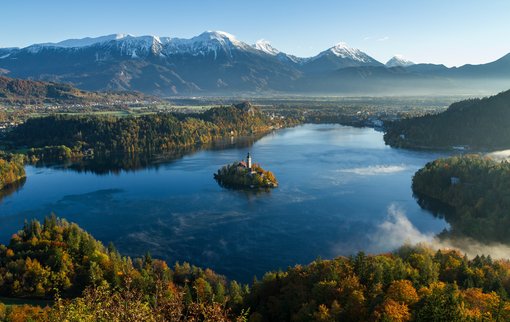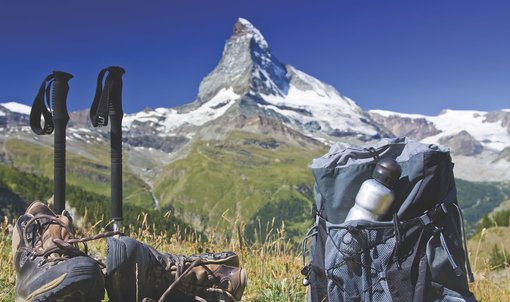The Julian Alps are a truly undiscovered treasure. Nestled at the eastern extreme of the Alps, the Julian Alps are known for their rugged wilderness and striking granite peaks. While the Julian Alps remain proudly wild in comparison with their western cousins, they are dotted with unique and charming villages, as well as being steeped in both culture and history. Hiking in the Julian Alps is the closest feeling you can get to hiking in either the Swiss Alps or Italian Dolomites in the decades past before those locations became world famous destinations.
Majestic Alpine Lakes
The alpine lakes seated in the Triglav National Park are a Slovenian treasure. Of particular interest are the Valley of Five lakes and Lake Bohinj. The Valley of Seven lakes is a sacred and protected place just beneath the immediate and stunning flank of Triglav. The valley runs down from the edge of the mountain towards the lowlands below supporting seven crystal clear and remarkably isolated alpine lakes. Lake Bohinj is the largest lake in Slovenia and is a popular destination for tourists from the capital of Ljubljana. On the shores of the lake are the shells of old style royal hotels, as well as lakeside fine dining, and a popular campground. Lake Bohinj slams into the steep walls of the mountains of the park, with the edges of the lake rising thousands of feet into the air and a pounding waterfall at the lakes source.
Triglav National Park
The Triglav National Park is among the oldest and most impressive in Europe. Originally proposed in 1908, the park would grow in size until it reached its final impressive 800 square kilometers in the 80’s. The Triglav National park remains uniquely wild, with stunning pine forests supporting large populations of deer, mountain goats, and ibex. Of particular value is the isolated Tamar Valley, which only supports a single non-public road and one of Tito’s old hunting cabins - which we stay in! Above Tamar Valley are multiple waterfalls which pour downward from the head of the watersheds of both the Adriatic and Black Seas.
Fairy Tale Villages
The villages nestled in the Julian Alps are uniquely charming, often still supporting agriculture, free range livestock, and farmers turning hay through traditional techniques are still common sights. Kranjska Gora, a ski village seated directly beneath Prisank’s awe inspiring Dolomite face, is one of the most wonderful villages we visit at Ryder-Walker. When visiting Kranjska Gora it is worth taking part in the bustling local cafe culture, as well as wandering up to the lake seated just above town, where the locals while away the afternoons hiking and sun bathing. Kranjska Gora is also of particular historical importance because of its proximity to Italy and Austria, and there are many markers of where the Cold War era guard posts and fences used to stand. In modern times, they are replaced by white stone markers and monuments, celebrating the modern peace between these nations.
Kielbasa and Craft Beer
Nobody knows sausage like the Slovenians, and Slovenian kielbasa shows that best of all. Often roasted and served with kraut or cabbage, kielbasa is a mouth-watering treat to finish off a long day of hiking. While you might not associate Slovenia with craft beer, the country has a flourishing craft beer culture. The beers are often drunk at busy local cafes that spill out onto the streets and are packed with locals in the afternoons and early evenings. In particular, the popular unfiltered lagers are worth trying!
Mount Triglav
Just shy of 10,000 feet, Triglav is the highest mountain in Slovenia, as well as the highest mountain in the Julian Alps. It is one of the jewels of Slovenia, proudly displayed on the Slovenian flag. Achieving the precipitous mountaineering route to its summit is widely regarded as a rite of passage for young Slovenians. Hike around the striking limestone flanks of the mountain, staying in both mountaineering huts on the immediate flanks of the mountain as well as the vacation towns that have flourished beneath the massif. Similarly stunning is the mountain Prisank, which is famous for its cyclopean “eye,” a hole in the mountain which the sun shines through once a year. The mountain Razor is equally as famous, known by Slovenian mountaineers for its thrilling Via Ferrata which runs along the entire ridge of the mountain.







